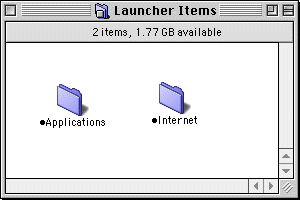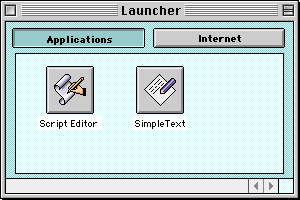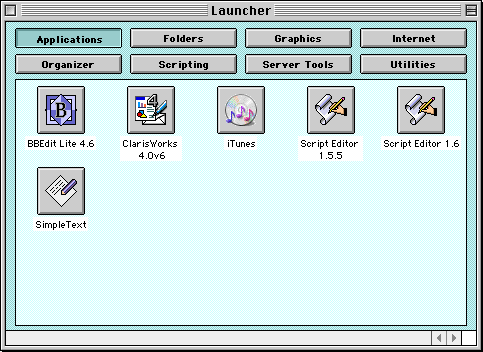|
When you start the Launcher, you will probably see a colored window with 2 "buttons," one for the Script Editor, and another for SimpleText. |
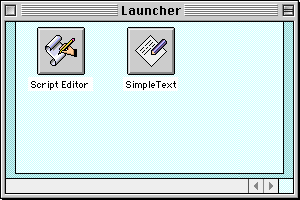
|
|
Open up your System Folder. In it you will find the "Launcher Items" folder. Open it. I've taken the screen shot while holding down the command key (open Apple, next to the space bar) while clicking on the window's title bar (and scooting the mouse out of the way), to show the enclosing folders. |

|
|
You should quickly realize that the buttons displayed in the Launcher are the same as the aliases in the Launcher Items folder. The Launcher is simply an application which lets you look at a Folder in a special way.
|


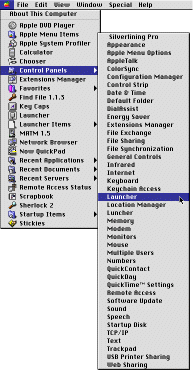 You will find the Launcher in the Control Panels folder (accessible thru the Apple Menu).
You will find the Launcher in the Control Panels folder (accessible thru the Apple Menu).


